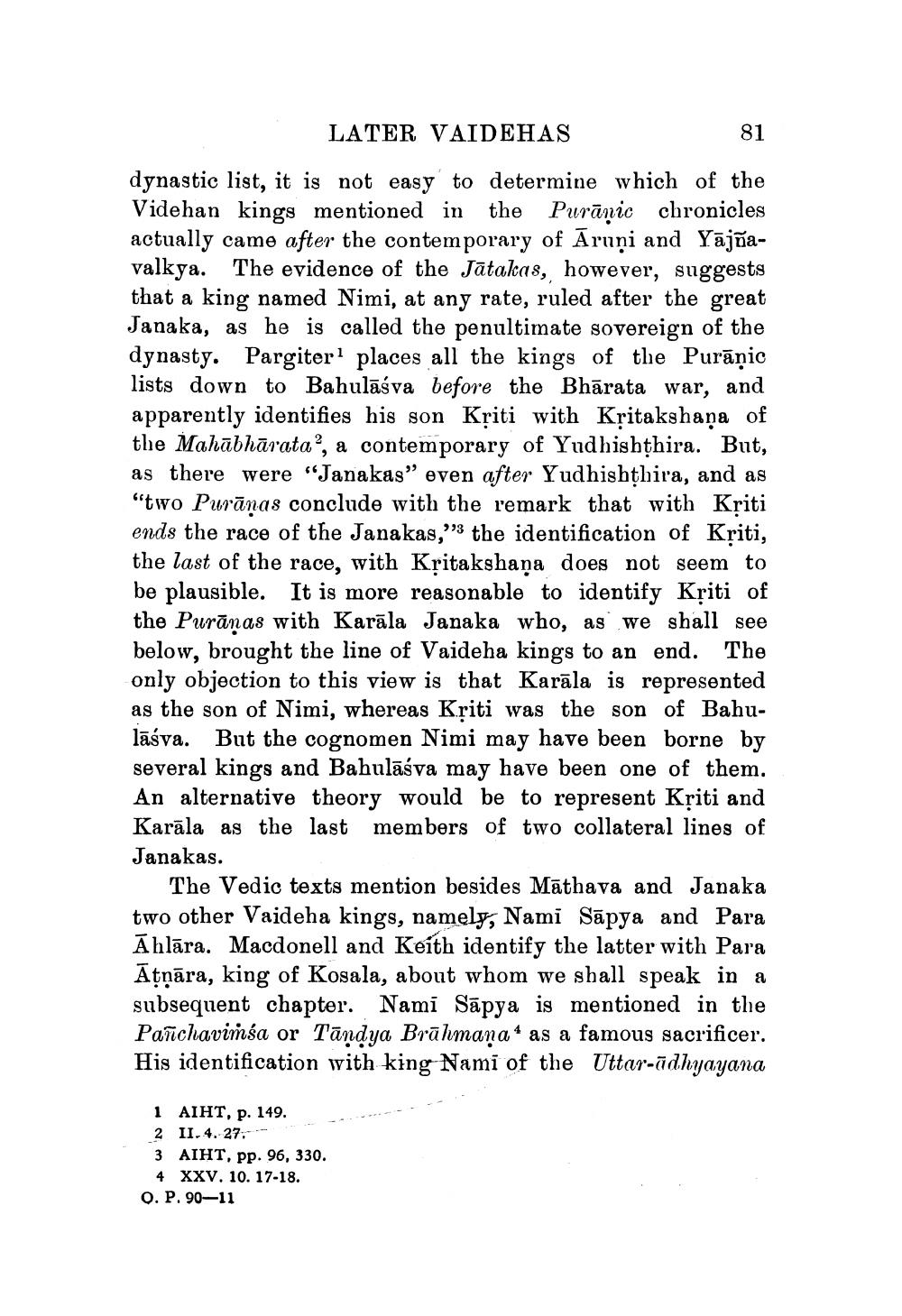________________
LATER VAIDEHAS
81
dynastic list, it is not easy to determine which of the Videhan kings mentioned in the Purānic chronicles actually came after the contemporary of Aruņi and Yājñavalkya. The evidence of the Jātakas, however, suggests that a king named Nimi, at any rate, ruled after the great Janaka, as he is called the penultimate sovereign of the dynasty. Pargiter places all the kings of the Purāṇic lists down to Bahulāśva before the Bhārata war, and apparently identifies his son Kriti with Kritakshana of the Mahābhārata”, a contemporary of Yudhishthira. But, as there were “Janakas” even after Yudhishthira, and as "two Purānas conclude with the remark that with Kriti ends the race of the Janakas," the identification of Kriti, the last of the race, with Kritakshaņa does not seem to be plausible. It is more reasonable to identify Kriti of the Purānas with Karāla Janaka who, as we shall see below, brought the line of Vaideha kings to an end. The only objection to this view is that Karāla is represented as the son of Nimi, whereas Kriti was the son of Bahulāśva. But the cognomen Nimi may have been borne by several kings and Babulāśva may have been one of them. An alternative theory would be to represent Kriti and Karāla as the last members of two collateral lines of Janakas.
The Vedic texts mention besides Māthava and Janaka two other Vaideha kings, namely, Nami Sāpya and Para Āhlāra. Macdonell and Keith identify the latter with Para Ātņāra, king of Kosala, about whom we shall speak in a subsequent chapter. Nami Sāpya is mentioned in the Panchavissa or Tāndya Brāhmana* as a famous sacrificer. His identification with king Nami of the Uttar-ūdhyayana
1 AIHT, p. 149. 2 II.4. 27. - 3 AIHT, pp. 96, 330.
4 XXV. 10. 17-18. 0. P. 90-11




